
Guests
- Arnie Gundersennuclear industry executive for many years before blowing the whistle on the company he worked for in 1990, when he found inappropriately stored radioactive material. He is now chief engineer at Fairewinds Associates
Japan is on the verge of a nuclear catastrophe after a third explosion at the Fukushima Daiichi nuclear power plant, which was heavily damaged by Friday’s 9.0-magnitude earthquake and tsunami. The blast seriously damaged the plant’s Number Two reactor’s steel containment structure, causing nearby radiation levels to rise to 100 times the legal limit for exposure in a year. Plant workers “were manually opening valves into these containments to keep the pressure from building up,” says our guest Arnie Gundersen, a nuclear engineer. “I would suspect that a lot of those efforts have been abandoned because of the high radiation levels.” [includes rush transcript]
Transcript
SHARIF ABDEL KOUDDOUS: Japan is on the verge of a nuclear catastrophe after a third explosion at the nuclear reactor most damaged by Friday’s 9.0-magnitude earthquake and tsunami. The blast at the Fukushima Daiichi nuclear power plant has seriously damaged the Number Two reactor’s steel containment structure for the first time and caused the leaking of radioactive materials. Radiation levels around the plant in one hour were at eight times the legal limit for exposure in a year. Residents within 12 miles of the plant have been ordered to evacuate, while those living up to 18 miles away have been ordered to remain indoors.
Government officials initially downplayed the severity of the damage to the plant, but in a nationwide address, Japanese Prime Minister Naoto Kan acknowledged radiation levels are dangerous.
PRIME MINISTER NAOTO KAN: [translated] There were hydrogen explosions at reactors Number One and Number Three, and there was a fire at reactor Number Four. There is radiation in this area, and the level is pretty high. There is mounting fear that there will be more leaks. So, once again, I would like to reiterate that the areas around the Fukushima Daiichi plant — most people have already been evacuated from the 20-kilometer radius, but we reiterate, people need to stay away from this area.
SHARIF ABDEL KOUDDOUS: Emergency workers have also been ordered to evacuate the plant. If a meltdown ensues, Japan could face the world’s largest radiation emissions since the Chernobyl disaster 25 years ago. The threat of catastrophe comes amidst a massive recovery effort in the aftermath of the tsunami and earthquake that’s believed to have killed over 10,000 people and left over 500,000 homeless.
We’ll be going to a break and coming back. We’ll be joined by Arnie Gundersen, a nuclear engineer who’s coordinated projects at 70 nuclear power plants around the country. He provides independent testimony on nuclear and radiation levels to the Nuclear Regulatory Commission and congressional and state legislatures. Arnie Gundersen was a nuclear industry executive for many years before blowing the whistle on the company he worked for in 1990, when he found inappropriately stored radioactive material. He joins us right now from Burlington, Vermont.
And joining us from San Francisco is Aileen Mioko Smith. She is director of the Kyoto-based Green Action and a board member of Greenpeace International. Aileen is one of Japan’s leading voices challenging the production, commerce and transport of nuclear material, and calling for sustainable energy policies. She joins us from San Francisco.
But first, we to Arnie Gundersen in Burlington, Vermont. Mr. Gundersen, can you explain exactly what is happening right now at the plant in Tokyo?
ARNIE GUNDERSEN: Yes, thank you. The first unit exploded over the weekend, and the second unit, which is Unit Three, exploded the next day. Yesterday, the third unit, which is Unit Two there — so, One, Two and Three now have all had hydrogen explosions. This is not a nuclear explosion; this is a chemical explosion. Hydrogen is created because the fuel is too hot and enormous amounts of hydrogen are created.
The biggest problem seems to be in the second reactor, where the containment appears to be ruptured, and the reactor, as well, may be damaged from this explosion. So the explosion yesterday was the most severe. The most telling issue, as far as I’m concerned, is that the site has been evacuated. There was 800 people on the site, and then they evacuated all but 60 people. That’s basically telling the crew to man the lifeboats.
In the fourth unit, there is — there was a fire in the fuel pool. And I have heard unconfirmed reports that it has started back up again. In the fifth and six units, the fuel pools are getting warmer.
So, basically, three units are in meltdown condition. One is definitely worse than the other two. But, you know, “meltdown” and “worse” are relative terms. It’s very bad in three units. The fire in the fourth unit is also a serious concern.
Small amounts of radiation have been detected in Tokyo, which is not a problem, yet. Thank goodness. If there is any goodness coming out of this, it’s that the wind is blowing out to sea right now. If the wind were to shift inland, I think we’d have a different situation.
And the last thing is that the emergency zone, out to 20 kilometers, people have been told to leave. And out to 30 kilometers, people have been told to stay indoors, wash your clothes when you come in, wash your body if you go outside and come back in. I think that’s not enough. I really think that emergency planning needs to be — at least children out in that zone should be sent elsewhere.
SHARIF ABDEL KOUDDOUS: And explain what you mean, what you understand, by the levels of radiation that are leaking right now. The levels around the plant, in one hour, at eight times the legal limit for exposure in one year — what does this mean?
ARNIE GUNDERSEN: It’s very difficult to determine that right now. You have to remember, with the explosions, most of the radiation detectors have been destroyed. So, the New York Times is reporting that workers are picking up in seven minutes their yearly exposure in certain areas within the plant. I studied Three Mile Island extensively, and it’s very difficult to chase one of these radioactive clouds to determine exactly where it’s touching down. So, numbers in the vicinity of the plant are probably too low. It’s very difficult to be right at the spot where the worst exposures are occurring. So, I take with almost no credence any of the numbers in the vicinity of the plant. But my experience shows that they’re probably too low.
SHARIF ABDEL KOUDDOUS: What are the efforts right now to cool down the plant? Why do these explosions keep happening? This is the third explosion now.
ARNIE GUNDERSEN: Yeah, that’s a great question. They will continue. I think, given that the site has been evacuated — you know, those 800 people were not sitting around playing poker. They were all doing critical, critical things. So, if you’ve let 800 people go and are trying to do the work of 800 with 60 people, clearly critical items are not going to be accomplished.
So, the reason these things are continuing to blow is because the zirconium oxide reactions are continuing. What that means is that the fuel is so hot, it’s chemically stripping water, and it’s creating oxygen and hydrogen. It’s just ripping the water molecule apart and creating hydrogen and oxygen. And that hydrogen continues to build up. That’s what’s causing the explosions.
In order to avoid that, they were manually opening valves into these containments to keep the pressure from building up. And that’s one of the critical activities that these 800 employees were doing, as well as manning fire pumps and pushing water in. But I would suspect that a lot of those efforts have been abandoned because of the high radiation levels right now.
SHARIF ABDEL KOUDDOUS: How similar is the plant in Japan, the Fukushima Daiichi plant, to many of the nuclear power plants in this country?
ARNIE GUNDERSEN: It’s almost identical to 23 of them. For instance, the Quad Cities and the Dresden plant in Illinois, the Vermont Yankee plant here in Vermont, Oyster Creek in New Jersey, Pilgrim in Massachusetts — it’s almost identical to those and more than a dozen others.
You know, this reactor design, this containment design, has been questioned since 1972. The NRC in 1972 said we never should have licensed this containment. And in 1985, the NRC said they thought it was about a 90 percent chance that in a severe accident this containment would fail. So, that we’re seeing it at Fukushima is an indication that this is a weak link. It’s this Mark I, General Electric Mark I, containment. And we have — essentially one-quarter of all of the nuclear reactors in the United States, 23 out of 104, are of this identical design.
SHARIF ABDEL KOUDDOUS: Arnie Gundersen is a nuclear engineer who has coordinated projects at 70 nuclear power plants around the country. We’re going to break for 60 seconds. When we come back, we’ll also be joined by Aileen Mioko Smith, director of the Kyoto-based Green Action, and we’ll speak with the Governor of Vermont, Peter Shumlin. Stay with us.
[break]
SHARIF ABDEL KOUDDOUS: We’re talking about the nuclear disaster in Japan. We’re joined right now by the Vermont Governor, Peter Shumlin. Last week, the Nuclear Regulatory Commission announced it would renew the license for Vermont Yankee Nuclear Power Plant, the only power plant in Vermont. Last year, state legislators voted to close the plant when its license expires next year. The 38-year-old plant is one of the oldest in the country and has had a series of leaks.
Governor Shumlin, welcome to Democracy Now! How does what’s happening right now in Japan affect Vermont Yankee?
GOV. PETER SHUMLIN: Well, let me first say that my heart obviously goes out to the people of Japan. Extraordinary crisis and everyone’s worst nightmare, when they have aging nuclear power plants in their country or in their state. Vermont is no different. We have an aging nuclear power plant here. It’s owned by Entergy Louisiana, a company that we found we can’t trust. And obviously, you know, I think it asks all of us to reexamine our policy of irrational exuberance when it comes to extending the lives of aging nuclear power plants — we have 103 in America — that were designed to be shut down after 40 years. Ours was designed be shut down in 2012.
We’re the only state in the country that’s taken power into our own hands and said that, without an affirmative vote from the state legislature, the Public Service Board cannot issue a certificate of public good to legally operate a plant for another 20 years. Now, the Senate has spoken, 26 to four, saying, no, it’s not in Vermont’s best interest to run an aging, leaking nuclear power plant. And we expect that our decision will be respected.
SHARIF ABDEL KOUDDOUS: Now, the day before this earthquake and the tsunami hit Japan, the Nuclear Regulatory Commission extended the lifespan of Vermont Yankee for additional 20 years. Explain the struggle that’s happening at the state and federal level.
GOV. PETER SHUMLIN: Well, you know, that’s really — should be of no surprise to anyone. There are 104 aging nuclear power plants in America. We do have a policy of irrational exuberance, as if we can run them beyond their designed life. And the NRC so far has approved 60 — all 60, I should add — of the applications for extension that have been granted. So it certainly would have been big news if for some reason the NRC said no.
The good news is, for Vermont, at least, that the chair of the NRC reaffirmed Vermont’s authority to also determine our own nuclear future, and they don’t intend to stand in the way of that. So, really, it was sort of a no news, no surprise item. It’s not a surprise that they continued their policy of, as I mentioned, irrational exuberance around our aging plants. The good news is that they respect Vermont’s authority to determine our own future.
SHARIF ABDEL KOUDDOUS: The Obama administration wants to expand the use of nuclear power. Do you oppose that?
GOV. PETER SHUMLIN: Well, you know, I spoke with the President about that directly a couple of weeks ago at the White House. And I said, “You know, Mr. President, if you want to convince us that new nuclear has a future in America, you have to help us deal with old nuclear in a more rational way.”
And, you know, we have a number of challenges right here in Vermont that should be an example for the country. The first is, our plant keeps leaking. It’s leaking tritium, other nuclear substances, into the ground right here in Vermont, in a state wherein — a Green Mountain state — there is nothing that Vermonters cherish more than our quality of life and protecting our natural resources. We are the environment state. So, that’s a challenge.
Second, the NRC currently is allowing the nuclear plant operators to determine, once a plant is shut down, whether they decommission it, which is what they all promised to do when they built them 40, 50 years ago, or whether they put it in something called “safe store,” which allows the carcass of the plant to sit in its location for up to 60 years, because the companies who own them have been unwilling to fill up the decommissioning funds to take them away.
Now, what I said to the President is, “Listen, you’ve got to help us deal with old nuclear before we can have any confidence in new nuclear. Make sure that these profitable companies, like Entergy Louisiana, fill up the decommissioning funds so they’re taken away on time and we’re not left, in our case, with a carcass of an aging nuclear power plant in a flood plain on the banks of the Connecticut River for 60 years, because the company is unwilling to fill up the fund. Secondly, let’s deal with the high-level waste issue.” We have high-level nuclear waste sitting in dry cask storages on the banks of the Connecticut River for as long as the eye can see, after having been promised when the plant was built that the federal government would magically take all that high-level waste away. So, I said, “Mr. President, you know, help us deal with old nuclear first. Let’s stop this policy of insanity about old nuclear, and we’ll be happy to talk to you about new nuclear.”
SHARIF ABDEL KOUDDOUS: Governor Peter Shumlin, I want to thank you very much for being with us. Governor Shumlin is the Democratic governor of Vermont.
We go right now to Aileen Mioko Smith. She’s the director of Kyoto-based Green Action. She’s on the board of Greenpeace International. She’s joining us from San Francisco right now, one of Japan’s leading voices challenging nuclear power.
Welcome to Democracy Now!
AILEEN MIOKO SMITH: Thank you very much.
SHARIF ABDEL KOUDDOUS: Can you tell us what you understand is happening right now in Japan in terms of the evacuation?
AILEEN MIOKO SMITH: Yes. By the way, I’m not a board member of Greenpeace International. I’m working with Green Action in Kyoto, Japan.
Right now, the evacuation is underway, and we’re very concerned about the people around the plants. I think that what we’re suffering very much right now in Japan is that the government only said a evacuation area within 10 kilometers, or six miles, was necessary. So, there’s nothing on the books about any evacuation to be undertaken beyond that limit. And I think that we are right now suffering from the fact that nothing was on the books to evacuate people beyond that area. I agree with Arnie Gundersen, what he just said, that evacuations should be a larger area right now. Thirty kilometers is not enough. That’s 18 miles. It’s not sufficient. It should be going on beyond that right now, so that people can be prepared for wider areas of radiation contamination.
We’re very concerned with the complete lack of environmental monitoring around the region where people are evacuated and where people need to be evacuating even further. And that was a concern of Japanese citizens way back. This plant, from the very start, even before it was built, citizens said that the land was not proper for building a nuclear power plant. There was opposition. There were lawsuits. And of all — in all the areas, 54 nuclear power plants in Japan, every area, citizens have fought siting, because of seismic concerns. So this is very much a man-made problem. People may think it’s a combination of man-made and human — natural disaster, but no plant should have been here in the first place.
SHARIF ABDEL KOUDDOUS: Japan’s policy right now is to build eight more nuclear plants. What do you understand is happening with that right now?
AILEEN MIOKO SMITH: Well, right now, just the day before this accident happened, people were — citizens who had been opposing a plant site for 30 years down in Yamaguchi Prefecture, southwest of Osaka, were actually virtually in hand-to-hand combat with people who — with the utility who was coming in and trying to start a landfill in order to build a plant. Of the eight sites, they’re still supposed to be under construction and be built, but obviously that situation would change as of this week.
SHARIF ABDEL KOUDDOUS: And the information coming right now from the Japanese government, very little information, what do you understand they’re saying or they’re not saying?
AILEEN MIOKO SMITH: Well, I think that there are three things. One is that they themselves don’t really know what’s going on. But the other is, I think that they are trying to protect the public. I think it’s very important not to panic people, so the tone, which is very calm, is good and should remain that way. But they should be informing the public exactly all the things that they know and exactly all the things — admit to all the things that they don’t know. And I don’t think that they’re informing the public. I feel like — we really feel that the government is patronizing of the citizens. You can’t protect the people from reality. The reality is that the situation is very serious, and emissions could become much greater.
And I think that the public really needs to be warned that, carefully, and that evacuations should be leading the situation, not like the situation is really bad and then you delay and delay but then you evacuate a little bit. Actually, what you should be doing is initially start the evacuation and be quite proactive about it, and evacuate ahead of the problem versus evacuating as a result of things that have happened. And that’s not happening right now. So I think that they have to be very quick right now in initiating calm evacuation of a larger area.
SHARIF ABDEL KOUDDOUS: I want to turn back to Arnie Gundersen for a moment now, joining us from Burlington, Vermont. What is the significance of the removal of 750 workers from the nuclear plant? How will this affect the effort to prevent a meltdown?
ARNIE GUNDERSEN: It’s got to make the efforts worse. You know, these 750 people that are being evacuated were doing critical work. They weren’t sweeping floors and washing windows; they were doing critical work. So, when the staff, basically, is cut — 90 percent of the staff is told, “You have to leave the site” — that’s an indication that a lot of critical work isn’t getting done. I really think it’s also — it’s an indication that management at the site has thrown in the towel and is going to let this thing run its course without any more human intervention. What that means is that — I’m particularly concerned about another aftershock, especially if an aftershock — on the weak Unit 2 containment, which already apparently has failed, and an aftershock would make it worse. The other thing that especially concerns me is that a large group of personnel were fighting the fire in the fuel pool on Unit 4, and again, you can’t have 60 people on a six-unit site and expect that anything gets done.
SHARIF ABDEL KOUDDOUS: There was the disaster at Three Mile Island, the Chernobyl disaster. This is a disasters of a different sort. There’s been three explosions. Are we in unchartered territory right now?
ARNIE GUNDERSEN: This is certainly right now bumping up against the magnitude of Chernobyl. It’s clearly passed what happened at Three Mile Island. And it’s not clear that this situation may not get worse, not better. You know, Chernobyl was one reactor. There are three in either partial meltdown or meltdown. And then the other one has a fuel pool fire. And I understand this morning that the temperatures in the other two fuel pools are also increasing. So, you know, I’ve said before that this could easily become Chernobyl on steroids. It’s not there yet, but given that the essential personnel have been evacuated, it could easily get there within 24 hours.
SHARIF ABDEL KOUDDOUS: And the issue of plutonium, Arnie Gundersen?
ARNIE GUNDERSEN: Yeah, you know, plutonium is named after Pluto, the god of Hell. And that’s an indication that it’s a pretty nasty element. It’s in all these reactors. Unit Three was using what’s called mixed oxide fuel. So Unit Three had more plutonium than the other units. But all of these reactor fuel pools and the nuclear reactors themselves have plutonium in them.
When plutonium volatilizes, when it gets hot and turns to a vapor, it can be breathed in. And, of course, it’s very — it can cause cancer in lungs very, very easily. And the containments, which are designed to contain this plutonium, are — have failed, at least in Unit Two. I believe in Unit One and Three, they are leaking, but they probably haven’t failed. So, it is likely that volatile plutonium is being released right now.
SHARIF ABDEL KOUDDOUS: Finally, Arnie Gundersen, what is most important for people to understand as they follow the news in these coming days?
ARNIE GUNDERSEN: I guess if I were in Japan, I would at least get the children away from the reactor, because their bodies are growing faster and their cells are more susceptible to radiation damage. I would go out to 50 kilometers and at least get the children away from those reactors.
You know, Japan is a long way from the U.S. There’s 5,000 miles of ocean for that plume to disperse over. So, it’s a little bit too early to determine what the health effects are on the United States. But it’s clear to me we will detect it. Within about five to seven days, the plume will hit the West Coast, and we’ll begin to detect the radiation. Exactly what the magnitude of the radiation is, as your previous caller said, there’s not any good environmental monitoring. There’s no monitoring in the plant, because, one, there’s no people, and, two, the instruments have blown up. So, we just simply don’t know how much radiation is getting out. I think the numbers we’re seeing now are on the low side, and they don’t really represent the true magnitude of what’s already happening.
SHARIF ABDEL KOUDDOUS: I’d like to end with Aileen Mioko Smith. You’ve been in touch with many people in Japan. Talk about the recovery efforts right now — in the north, there’s bodies washing ashore, there’s millions without food or power — as this nuclear crisis is unfolding.
AILEEN MIOKO SMITH: Yes, that’s correct. All the people that we know in Fukushima and Miyagi, we haven’t heard from them. In, finally, the last day and a half, we received, like, a phone call, where it’s just an instant. You can hear a voice for a split second, and you know that the person is alive.
These are all people who were fighting and concerned about the seismic safety of the Fukushima plants. Actually, the last two years, there was a review of all the seismic situation at the nuclear power plants, whether the land was safe and the facility, the nuclear power plant, was strong enough to withstand quakes. And just the last few months, the last few weeks, citizens had pointed out that TEPCO’s analysis was insufficient, and the government should not approve TEPCO’s analysis, but the government approved it. And these are the citizens that are now — I don’t know, some of them, if they’re alive or not.
The areas, the towns — we know people in all those towns. And you look at the photograph of the town, and it’s just completely devastated. I just completely believe that we would hear from all of them, and it was just a matter of time of hearing from them, but when you look at their towns, you know, you’re not sure, if you haven’t heard from them yet, whether they’re alive. So, they can’t — they can’t fight this situation now at the plant. All the people who were the spokespeople, who knew about the problems with the plant and the land there and the problems, they are all evacuated, or I don’t know if they’ve survived. And here we are — we’re the other spokespeople that lived further away, knew them, and are trying to speak on their behalf. And that’s where it is.
I was at the Fukushima plant last August with Kevin Kamps from Beyond Nuclear, based in Washington, D.C. We were there to warn about the dangers of spent nuclear fuel. I remember standing there with one of the people in Fukushima and looking down on the Daiichi plant on one side and the Daini plant on the other, and we took a photograph there, the three of us. And we met with the mayor of Futaba town, and also we were with — Kumano town, and also we went to Futaba town. These are two villages that are now completely evacuated.
We had independent scientists go in there three days ago, and they went in there to monitor. These are independent journalists that went with monitors to the actual towns that were evacuated. And all their radiation monitors went off. You could — they walked into the hospital of the town, and you could see that the evacuation was really rushed. They said that beds were turned over. Equipment, tubes for injections and everything was scattered all over the place. It was obvious people had left in a big hurry from the hospital. And when they went to the town hall, it was completely evacuated, and the levels just went off. So, they’re right now monitoring.
This person — as I was coming here to the studio, he was monitoring 50 kilometers, 30 kilometers from the plant and getting readings and putting it on the blog. I mean, this is the kind of information the government should be telling the people, but they don’t have the monitoring, because beyond 10 kilometers, radiation wasn’t supposed to leave. Every site in Japan, citizens have said, “Look, why do you say radiation stops immediately at 10 kilometers?” You know, it doesn’t, and you have to have a plan for if the radiation goes beyond 10. And the government, the national government, refuses to do this, and therefore, the prefectures didn’t get a plan. We’ve been to our prefecture over and over again about this.
SHARIF ABDEL KOUDDOUS: Well, we’ll continue to —
AILEEN MIOKO SMITH: One of the problems that we have is that —- yeah, we have plans for earthquake -—
SHARIF ABDEL KOUDDOUS: We’re going to continue to follow this story over the coming days. Aileen Mioko Smith, we have to leave it there.
AILEEN MIOKO SMITH: OK.
SHARIF ABDEL KOUDDOUS: We’re going to continue to cover this story very closely in the coming days. Aileen Mioko Smith is the director of the Kyoto-based Green Action, on of Japan’s leading voices challenging the production, commerce and transport of nuclear material. And thank you very much to Arnie Gundersen, a nuclear engineer who’s coordinated projects at 70 nuclear power plants around the country.

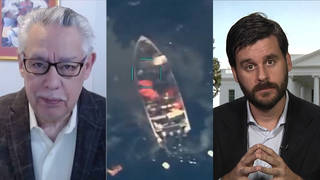
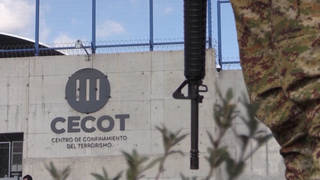
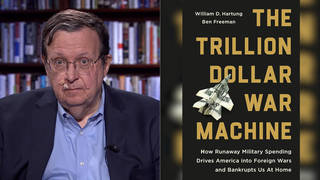
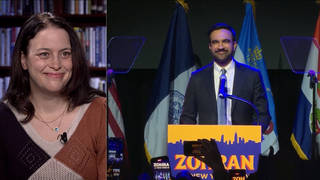





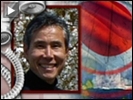
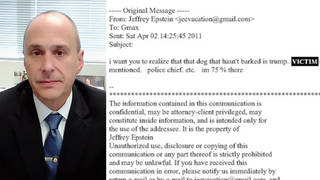
Media Options